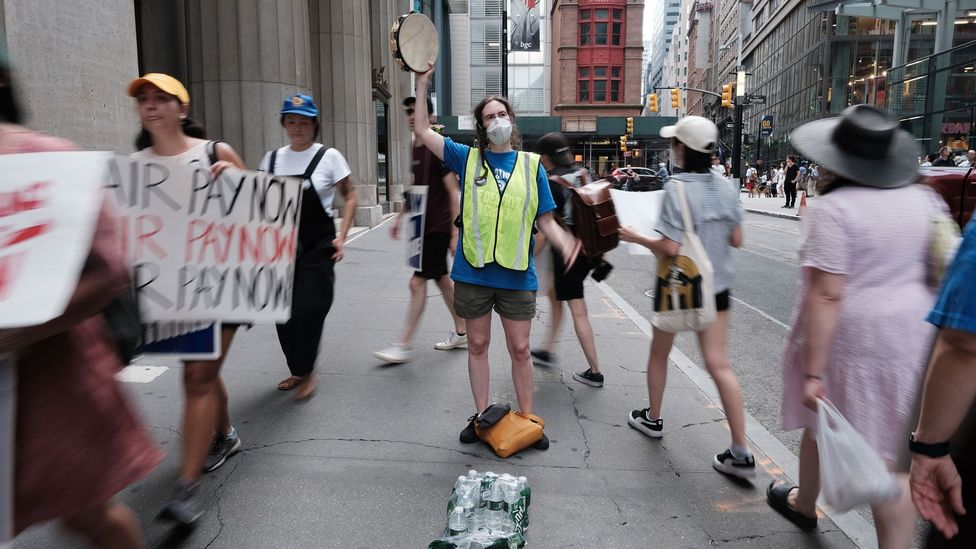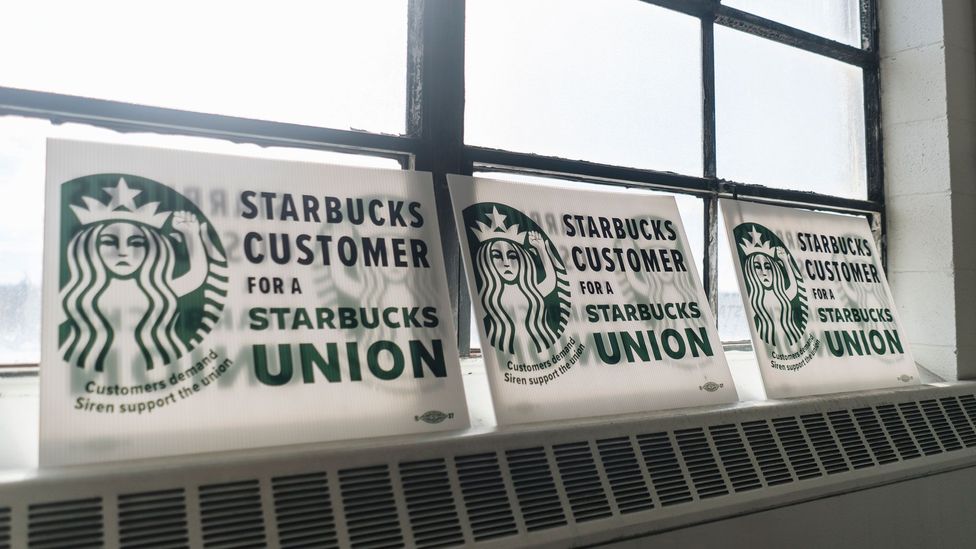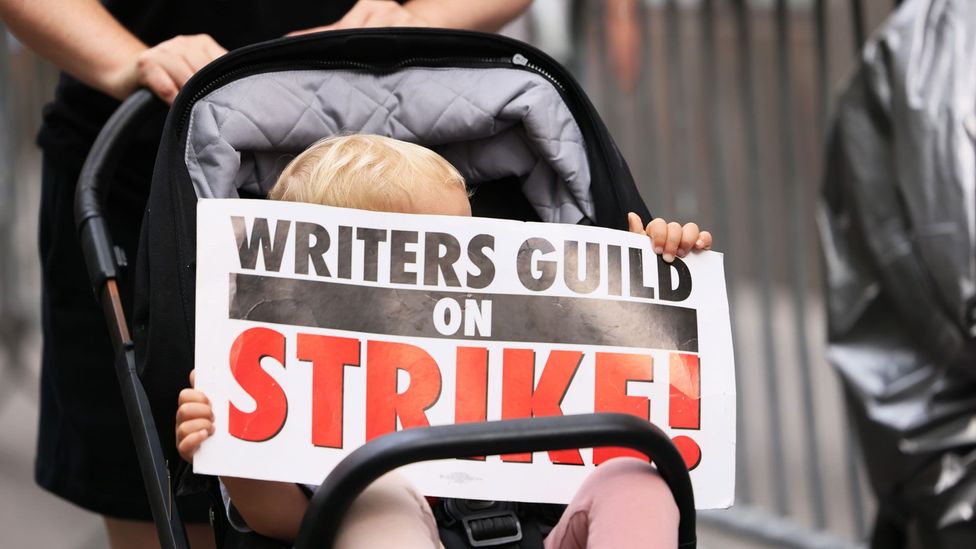
The Gen Zers leading a new pro-union push
US union membership has plummeted. But young workers are organising, pushing companies to rise to the occasion and meet their demands for better conditions on the job.
The Gen Zers leading a new pro-union push
Share using Email
By Kate Morgan3rd September 2023
US union membership has plummeted. But young workers are organising, pushing companies to rise to the occasion and meet their demands for better conditions on the job.
L
Labour unions in the United States have seen a major decline since the 1980s. According to Bureau of Labour Statistics data, more than 20% of workers belonged to a union in 1983 (the first year such data was available). In 2022, that number had fallen by half.
The decline, which many experts attribute to employer-friendly policy change, an increase in right-to-work laws that weaken employees' organising and collective bargaining power and a trend towards outsourcing, has left the United States with one of the lowest union densities among major economies.
But even with membership on the decline, worker support for unions has risen. In August 2022, Gallup recorded the highest levels of union support since the 1960s; 71% of Americans approve of labour unions, and about one in 10 non-union workers said they were "extremely interested" in joining one.
High-profile labour efforts have dominated headlines: in recent years, workers at Amazon, Starbucks and several universities have organised. The Writer's Guild of America and actors' union SAG-AFTRA remain on strike over demands for wage and benefit increases, along with protection from evolving AI.
And among those on the frontlines are the nation's youngest workers leading the renewed push for labour unions. Gen Z is, according to the Center for American Progress, "the most pro-union generation alive today".
"I think there's a growing understanding that if you have a job, you need a union," says Jaz Brisack (pictured above). The now-26-year-old was one of the earliest leaders of union efforts at Starbucks in Buffalo, New York, in 2021.
Gen Z's involvement and support for organised labour makes sense considering the context of their experiences, says Kate Bronfenbrenner, director of labour education research and a senior lecturer at Cornell University's School of Industrial and Labour Relations, US.
"First of all, they grew up being told they were going to be better off than their parents," she says. "The fact is, they struggled to find jobs, and the jobs they found were not as good as their parents'. They and the generations that follow them are saddled with college debt. They're looking at a world where they wonder if they should even have children because of climate change. They're concerned about broader social issues like reproductive rights and gun control, and planning to hold governments and employers accountable on those issues."

Young workers strike at the Manhattan headquarters of publisher HarperCollins in July 2022 (Credit: Getty Images)
Some company practices during the pandemic, adds Bronfenbrenner, increased Gen Z workers' enthusiasm for unions: low-income employees, service workers and workers without a higher educational degree had difficulty accessing personal protective equipment (PPE), health care and paid sick time on the job.
Reports from the Economic Policy Institute show that, in 2020, just upwards of 10% workers deemed "essential", including those in the retail sector, were covered by a union contract. Workers who were represented by a union, meanwhile, were more likely to access internal and external mechanisms to advocate for safety and health concerns.
"Many of these workers were on the front lines," she says. "When they asked for something as simple as some PPE, or time off to take care of their family members, or to not come to work when they were sick, employers said no. Workers are willing to put up with a lot but risking your life and your family's lives – that's too much, and I think that was the final straw."
Brisack, who uses they/them pronouns, says their employment at Starbucks amid a pandemic-related job shortage moved them to feel "nothing is coming to save us". It inspired them to try to generate their own solutions, and was key to their organising efforts, which involved many Gen Zers and supporters.
Brisack now believes in the power of unions to create equality among what they see as an inequitable power structure, saying, "I think people are looking back and seeing that what actually created improved standards of living in the past was union density, and they're more open to ideas about organising."
Gen Z vs the world
Baby boomers had plenty to draw them together, says Bronfenbrenner, as the generation "got very involved politically with civil rights, the women's movement and the anti-war movement". But in the late 1970s, "it shifted very dramatically, and there was much more focus on taking care of yourself and making money".
Researchers widely consider Generation X to be significantly more independent and self-reliant; and millennials, according to empirical research, are the most individualistic generation of all. Gen Z, on the other hand, appears to be the collective generation.

